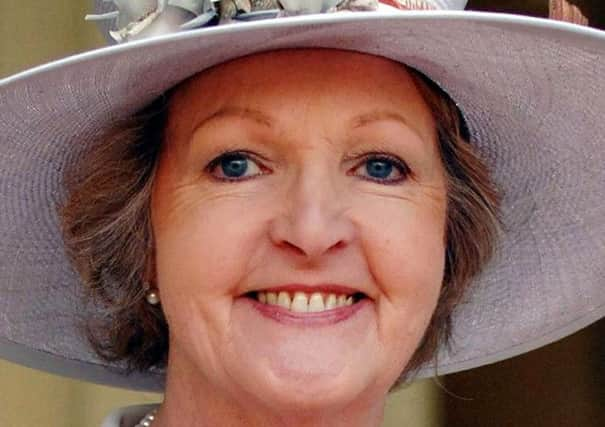Emma Cowing: There is nothing like a Dame


For what could be more desirable – for the woman to whom status is everything – than the ultimate female title?
Keith’s damehood however, is the media-friendly tip of a much bigger iceberg. Because for the first time ever, more women than men have been honoured in the New Year Honours list this year. For a tradition that has for all of its 96 years been overwhelmingly male-dominated, it is an intriguing development.
Advertisement
Hide AdAdvertisement
Hide AdAmong the celebrities there is actress Angela Lansbury, now 88, who also receives a damehood, while actresses Ruth Jones and Lynda Bellingham are made an MBE and an OBE respectively. There is opera singer Katherine Jenkins, broadcaster Sandi Toksvig, and entrepreneur Karren Brady.
But as always with these lists, the truly remarkable women are the ones whose names are not so familiar. Like Julie Bailey and Helene Donnelly, who receive a CBE and an OBE respectively.
Bailey set up the campaign group Cure the NHS after witnessing the appalling treatment of her mother in hospital, while Donnelly is the nurse turned whistleblower who raised nearly 100 complaints about the treatment of patients in Stafford Hospital.
Then there is Margaret Mizen, who has been honoured with an MBE alongside her husband Barry for their work increasing the awareness of the consequences of violent crime through their campaign CitySafe, which encourages young people to provide a place of safety for others who are fleeing violence. They launched the campaign after their son Jimmy was killed in an attack in south-east London in 2008, on the day after his 16th birthday.
And then there are women like Dame Professor Seona Reid, former director of Glasgow School of Art, who did much to conserve and protect the Mackintosh legacy at the Art School and now steers numerous arts bodies, including the National Theatre of Scotland and the Heritage Lottery Fund.
Not to mention the honoured head teachers, nurses, volunteers, campaigners – women most of us have never heard of, but who have chosen to dedicate their lives to serving and improving their communities.
So why then, has it taken until 2013 for so many of these women – 56 per cent out of the total – to be recognised?
Well, I have a theory. Until recently, many of us women have lacked the sort of brash male confidence that expects to receive rewards. This is partly because many women do not expect rewards in the first place, and it is rarely what motivates them to get out of bed in the morning. Women are fixers; they see what needs done, they get in and do it, and they don’t expect a ticker tape parade and a gold-plated gong for doing it.
Advertisement
Hide AdAdvertisement
Hide AdBut lately, and particularly in the past year, women have started to make themselves heard in this country. Whether it be a campaign to get women on bank notes, tackling online abuse or confronting the continuing insistence of some public organisations to blame sex attack victims instead of the perpetrator, women are no longer letting anyone get away with it. Instead they are rising up, speaking out, and demanding to have their say.
Perhaps then, that is why this honours list features more women than ever before. Not only are these women being recognised for the work that they do, but other women are recognising it too.
The honours system works through nomination. In order to be considered for an honour in the first place, someone has to nominate you. And while for many years an old boys’ network of well-established chums simply put each other’s names forward, that now appears to be changing. Ten years ago, only 30 per cent of the honours list was female: that it is now 56 per cent shows that women are finally starting to nominate each other.
So while there is still the usual procession of royal swan wranglers and shifty politicians, there are some real and genuine role models in this year’s list who demonstrate why the honours system still has a place in society in 2014. Which suggests there’s something to be said for the Margot Leadbetter approach: that when it comes to titles, women are just as entitled to them as men.